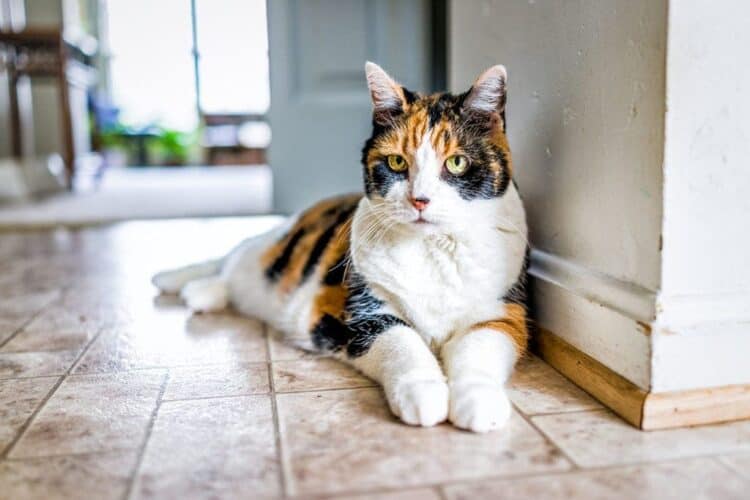Calico cats are pretty common, but it may surprise you to learn that male calicos are not. The majority of the calico cat population is made up of females, with only one out of every 3,000 calico cats being born male! But why is this the case?
In this post, we explore calicoes in more depth and share why male calicoes are so rare.
What Exactly Is a Calico Cat?
“Calico” is sometimes mistaken for a breed, but it’s actually a coat coloring pattern. Calico cats are tri-colored, with between 25% and 75% of their coat being white, and the rest more often than not being orange and black. That said, other color variations do occur.
For example, the dilute calico’s coat colors are of a lighter shade, appearing to be tan or cream instead of orange and gray, smoke, or blue instead of black. Calicoes can also have a tabby coat pattern.
They are sometimes confused with tortoiseshells, but you can tell the difference by checking for white patches. Tortoiseshells lack white in their coats and are bi-colored rather than tri-colored. So, if you find white patches on your cat, you’ve got a calico. If you can’t find any at all, you’ve got a tortie.
A variety of cat breeds can have a calico coloring pattern, including Maine Coons, Japanese Bobtails, Persians, Turkish Angoras, and American Shorthairs to name but a handful. In some cultures, calico cats are considered to be lucky due to their rarity. Historically, calico cats accompanied Japanese sailors aboard their ships to bring them good fortune on their travels.

Why Are Male Calico Cats So Rare?
It comes down to genetics. To be tricolored, cats must have two X chromosomes—one X chromosome carrying the orange color gene and one X chromosome carrying the black color gene. It’s also necessary to inherit a separate gene that causes white to appear on the coat.
Female cats inherit XX chromosomes, whereas males inherit XY chromosomes. The Y chromosome lacks a color gene, which is why a male cat cannot be calico unless they are a genetic anomaly. Once in a blue moon, male cats are born with the XXY genetic pattern, and the two Xs are what give them their calico coloring.
This is called Klinefelter syndrome, and cats born with it are more often than not infertile, which rules out breeding them. Male calico cats are like the unicorn of the cat world—you’d be very hard-pressed to find one!
Are Calico Cats Good Pets?
Sure! Despite their reputation for being “mean”, calico cats are wonderful pets in the right environment. They’re said to be feisty with an independent streak and don’t back down easily, but they’re often loving and loyal in equal effect.
Breed and color aside, every cat is an individual with an individual personality. There’s no way to solidly predict what kind of personality your calico will have until you meet them in the flesh!
Final Thoughts
If you’re lucky enough to be owned by a male calico cat, you have a very extraordinary and very rare young man indeed! Male calico cats are a real phenomenon and make up such a tiny percentage of the calico cat world. Rarity and gender aside, calico cats are fantastic companions and you’re sure to have a ball being owned (and bossed about) by one!
Featured Image Credit: Kristi Blokhin, Shutterstock














